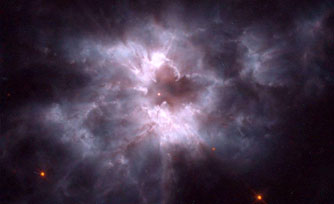Star Evolution
What is a star?

The Sun is the nearest star to Earth. A star is a massive body of plasma in outer space that is currently producing or has produced energy through nuclear fusion. Unlike a planet, from which most light is reflected, a star emits light because of its intense heat.
Scientifically, stars are defined as self-gravitating spheres of plasma in hydrostatic balance, which generate their own energy through the process of nuclear fusion. Stellar astronomy is the study of stars.
Many stars are between 1 billion and 10 billion years old. Some stars may even be close to 13.7 billion years old, which is the observed age of the universe. They range in size from the tiny neutron stars (which are actually dead stars) no bigger than a city, to supergiants like the North Star (Polaris) and Betelgeuse, in the Orion constellation, which have a diameter about 1,000 times larger than the Sun-about 1.6 billion km (1 billion miles). However, these have a much lower density than the Sun. One of the most massive stars known is Eta Carinae, with 100-150 times as much mass as the Sun.
How did stars evolve?

The process by which a star evolves during its lifetime over the course of millions to billions of years, as it ages and eventually dies is referred to as the the Stellar Evolution.
Everything on Earth, with the exception of hydrogen and helium, was made in stars. The hydrogen and most of the helium in the universe were made when the universe was only a few minutes old. We and our Earth are star dust or the nuclear waste of 8000 million years of Stellar Evolution.
Stars are born during galaxy formation from interstellar clouds of (mostly) hydrogen gas under gravitational collapse. The hydrogen atoms collide with increasing speeds until eventually they combine to form helium and release energy, giving birth to a star. Stars remain stable for a very long time, burning hydrogen into helium and radiating energy.
When a star runs out of fuel it cools and contracts. A star with mass below their limit might collapse to form a white dwarf star or a neutron star, often times they sit in their position, called planetary nebulae. A star with mass above their limit may explode or throw off matter to reduce its mass below the limit. Otherwise, it might collapse to infinite density and form a black hole.
White dwarfs, neutron stars, and black holes are the dead cinders of former stars.